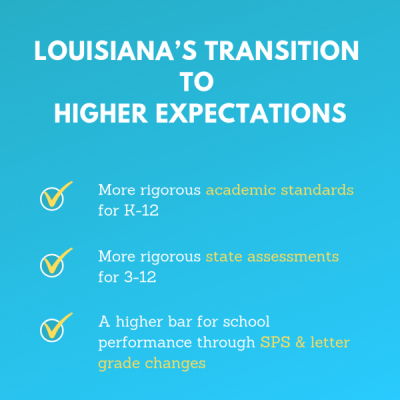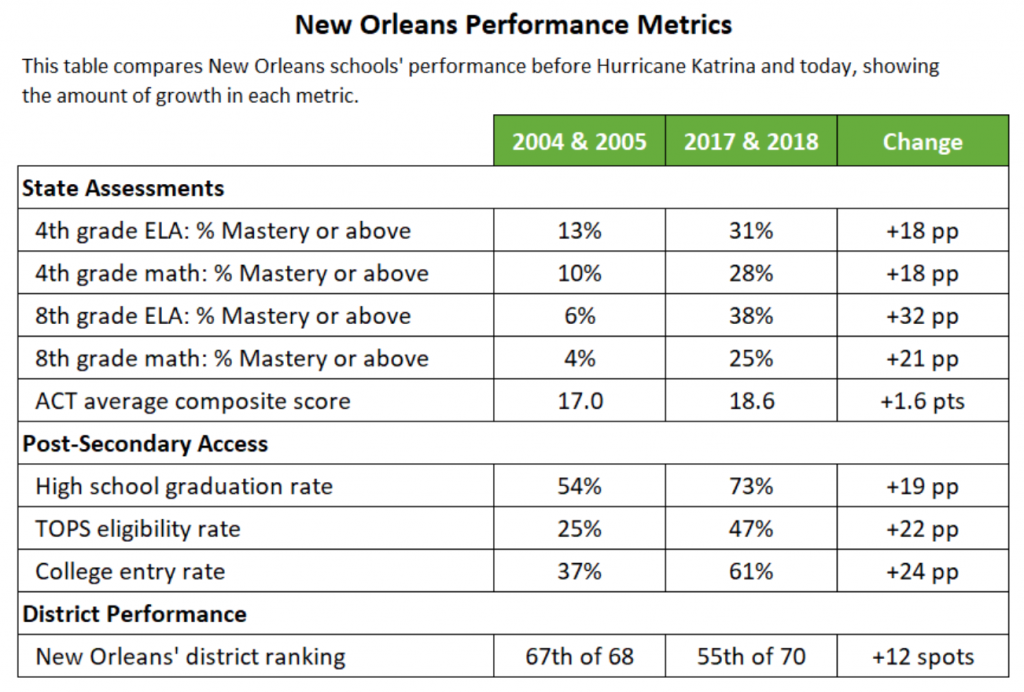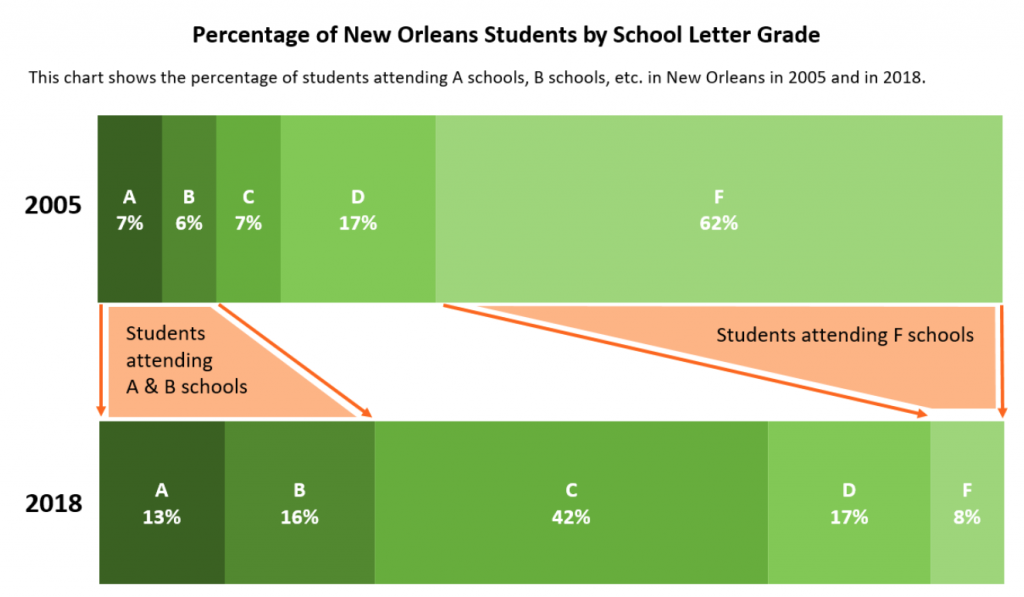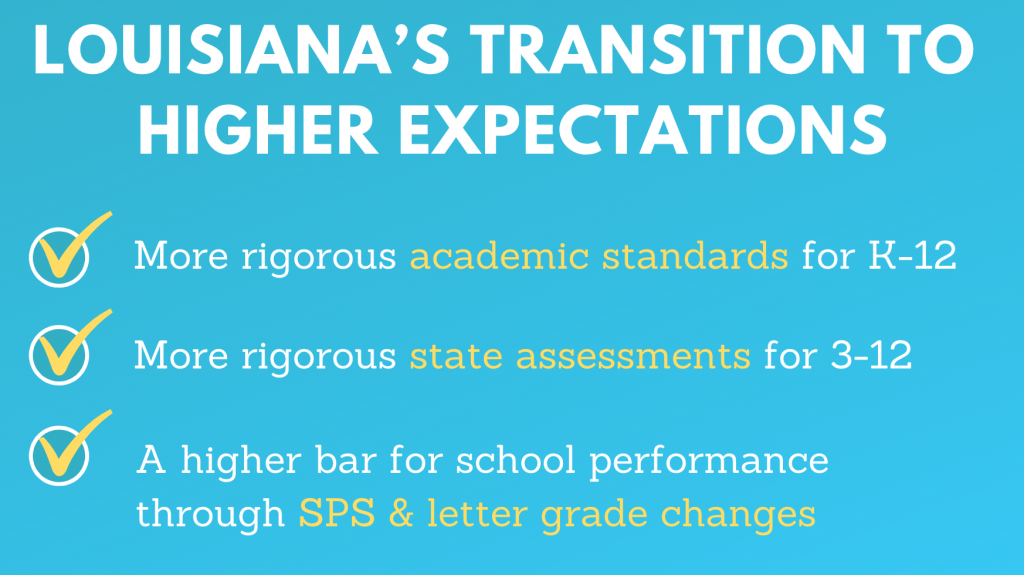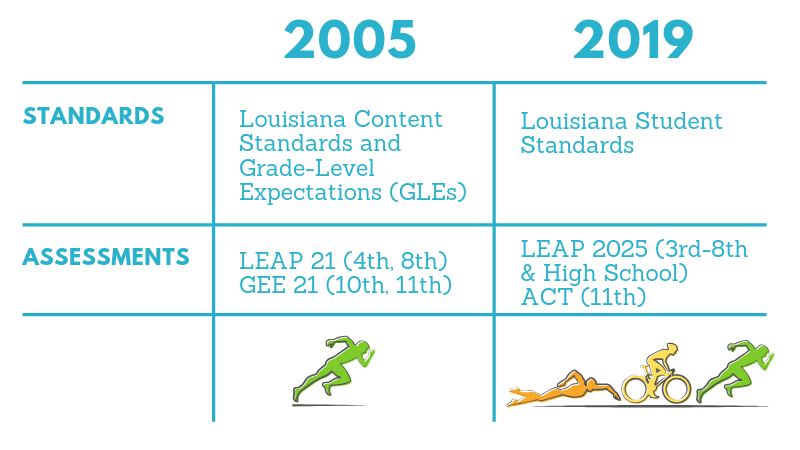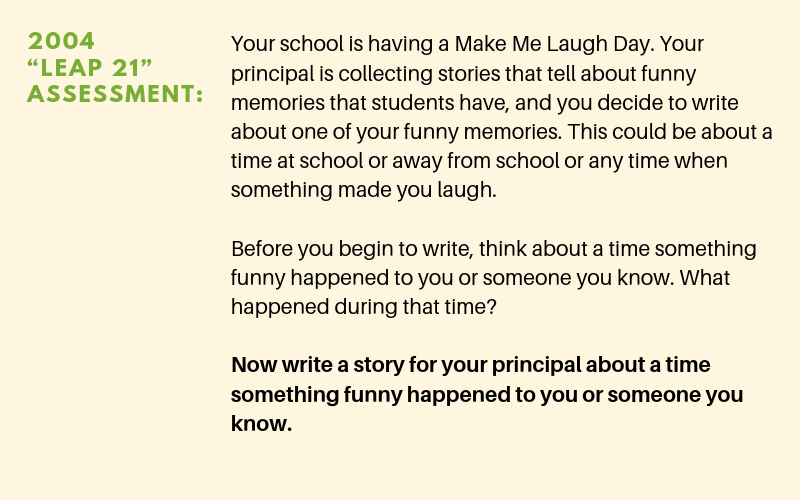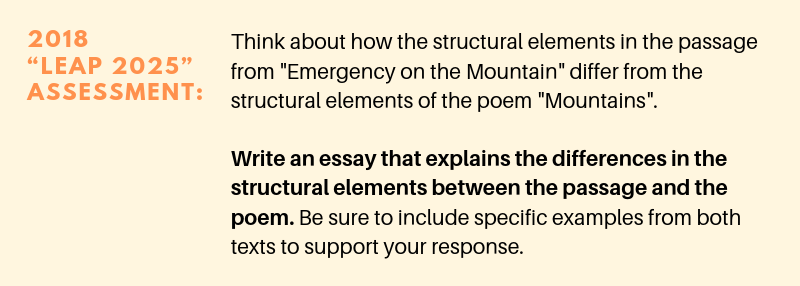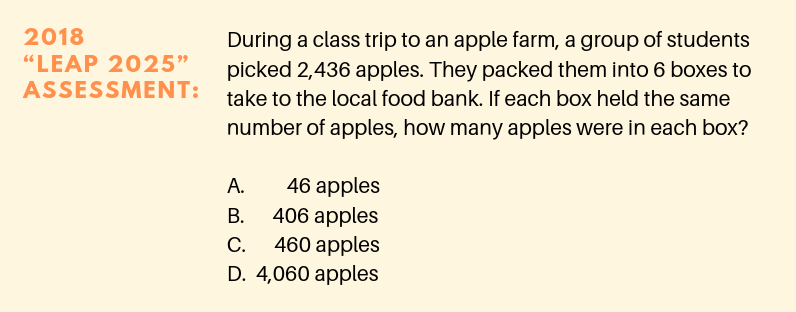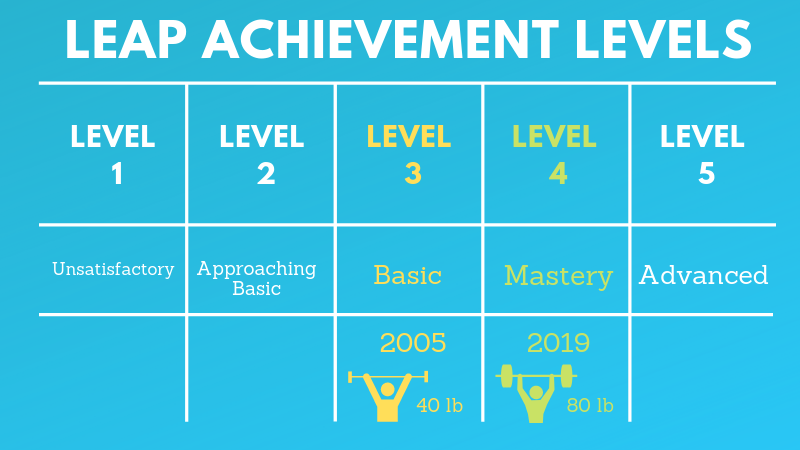Executive Summary:
Since Hurricane Katrina, educational outcomes in New Orleans — from state test scores to college entry rates — have improved dramatically. They have done so even as Louisiana’s academic expectations have risen in three significant ways in recent years:
- Academic standards have become more rigorous in order to prepare Louisiana’s students for true college and workforce success.
- Assessments have also grown more rigorous to ensure that students are demonstrating critical thinking skills and a deep understanding of concepts. The striking difference between test questions used on pre-Katrina assessments and assessments today can be seen in practice test examples provided below.
- School Performance Score and letter grade rating policies have become more demanding. For example, a score of “Basic” on state tests (level three out of five score levels) was Louisiana’s bar for “A” schools for many years; now, the bar has been increased to “Mastery” (level four out of five).
When our expectations for students were not high enough, many students met all the designated benchmarks in school only to reach college or the workplace and discover they were not truly prepared to succeed. The shift to higher expectations is critical to ensure that when students leave high school, they are genuinely ready to thrive in whatever they choose to pursue.
Last spring, New Orleans’ high school seniors proudly walked across the stage at their graduation ceremonies. In front of their families, their teachers, and their city, they accepted their diplomas. They did so at a rate that was 19 percentage points higher than students in 2004. More of them entered college as well – almost double the percentage as in 2004. In a video from KIPP New Orleans, 2018 KIPP Renaissance High School graduate Christopher Plummer reflected on the momentous occasion. He said, “I’m most proud of attending Morehouse College with a full academic scholarship. I’m hopeful I can…enlighten others and inspire others to get where I am or even better.”

The improvement in New Orleans schools since Hurricane Katrina has been undeniable. Thanks to the hard work of educators, families, policymakers, and students themselves, we have seen immense growth in our schools over the past thirteen years. While there is still much work to be done, progress can be seen across a broad array of performance metrics. In addition to higher high school graduation and college entry rates, significant improvements have been made in ACT scores, proficiency rates on state assessments, eligibility rates for state scholarships (TOPS), New Orleans’ district ranking compared to the rest of Louisiana, and more. All of these measures represent real changes that affect students’ educational experiences and outcomes and their life opportunities.
Notes:
- “pp” = percentage points
- State assessment and district performance data are from 2005 and 2018. Post-secondary data are from 2004 and 2017.
- 4th and 8th grade LEAP scores are shown because these are the only two grade levels assessed using the LEAP test in both 2005 and 2018; for other grade levels, different types of tests are used currently than pre-Katrina.
Higher Percentage of Students in “A” and “B” Schools Than Ever Before
Perhaps the most striking example of progress is schools’ letter grade ratings, which are based on School Performance Scores. Between 2005 and 2018, the percentage of New Orleans public school students attending a failing school dropped from 62% to 8%. And the percentage of students attending a school rated “A” or “B” has more than doubled, increasing from 13% to 29%. These changes represent significant, meaningful progress for schools and students — especially because these improvements have occurred during a statewide shift to significantly higher expectations.
Notes:
- A small number of schools do not receive School Performance Scores (SPS) or letter grades in a given year if they are new, recently transformed, or do not yet serve tested grade levels (3-12). In 2005 and 2018, 1% and 4% of schools did not receive SPS, respectively.
- In 2005, the La. Dept. of Education (LDOE) classified school performance using a star rating system instead of letter grades. According to the LDOE, ratings from the star system and the letter grade system can be compared using the following: 4 and 5 stars = A, 3 stars = B, 2 stars = C, 1 star = D, and 0 stars (“Academically Unacceptable”) = F.
Higher Expectations Across Louisiana
During the past thirteen years, the academic expectations for Louisiana students as well as the bar to which schools and districts are held accountable have undergone a dramatic shift. New, more rigorous academic content standards were created and rolled out in classrooms; and new, more challenging state assessments aligned with the new standards were also developed and implemented. Meanwhile, the School Performance Score and letter grade rating policies were made more demanding.
More Rigorous Standards and Assessments
Academic content standards are the “what” of student learning — the knowledge and skills that students are expected to learn in a given subject in each grade — but not the “how,” which is determined by principals and teachers through curriculum and instructional strategies. For example, in order to be prepared to take Algebra I in 9th grade, Louisiana’s standards state that students need to begin working with arithmetic equations in 1st grade, and by 8th grade need to master solving one-variable linear equations. The new standards, known as the Louisiana Student Standards, were developed through a very deliberate and thoughtful process to ensure alignment to college and workplace expectations; they are more rigorous, internationally benchmarked, and research- and evidence-based.
What does it mean to say that the new standards, as well as the new assessments, are more rigorous? We can find a helpful analogy in the world of sports. Imagine that teachers are coaches and students are athletes who are training for a race. In 2004, teachers were training students for a 10K race (such as the Crescent City Classic). Now, teachers are training students for a standard-distance triathlon: a race that involves not only a 10 kilometer run, but also a 1.5 kilometer swim course and a 40 kilometer bike course. A triathlon is not simply a longer, harder version of a 10K — it involves more complexity and the use of multiple types of skills in one race. Similarly, the rigor of the new Louisiana standards and assessments is more complex than simply being a harder version of their predecessors. They require students to think and understand deeply, with more critical thinking, analysis, and evaluation; to explain their thinking and provide evidence for their answers; and to integrate their learning across disciplines, which better reflects real-world challenges and solutions.
Note: In 2005, students in 3rd, 5th-7th, and 9th grades took the Iowa Tests of Basic Skills; these assessments are developed by the University of Iowa and are “norm-referenced,” as opposed to the “criterion-referenced” tests included in the graphic above.
Why did Louisiana move to more rigorous standards and assessments — from a 10K to a triathlon? Data showed that colleges and workplaces in Louisiana and nationwide require more of our students than we were preparing them for. Today’s youth simply face a different career landscape than prior generations: a report out of Georgetown University estimated that by 2020, over 50% of open jobs in our state will require post-secondary education. In terms of our analogy, colleges and workplaces require triathlon-level training, and many students had only trained for a 10K. More than half of New Orleans’ Class of 2004 graduates who enrolled in Louisiana colleges and universities had to take at least one remedial course in their freshman year. In order to address these issues, the LDOE and educators and parents from across the state redesigned the ‘training program’ to meet triathlon-level requirements. As stated by the LDOE, the new Louisiana Student Standards “represent the knowledge and skills students must master throughout elementary, middle and high school to be ready for the opportunities available upon their graduation.”
High expectations are also a matter of equity, and thus especially critical for New Orleans; 82% of our public school students are economically disadvantaged and 91% are students of color. Many research studies have explored the powerful relationship between teachers’ expectations and student achievement, showing both correlation and causation between higher expectations and higher student performance, and vice versa. When such studies also consider student characteristics such as race, ethnicity, and family income level, they have consistently found that teachers have lower expectations on average for students of color and students from economically disadvantaged families. Furthermore, they have found that these lower expectations have a negative impact on students’ outcomes. While most research in this area has focused on the expectations of teachers, biases and corresponding expectations at the structural level — schools, districts, and society as a whole — also have a significant impact. Thus, at both the system and classroom levels, rigorous statewide academic standards play a key role in ensuring that high expectations are held for all students.
A Closer Look at Rigor: Assessment Questions Grow More Complex
The striking difference in rigor between pre-Katrina academic expectations and current expectations can be seen when comparing state assessments from then and now. The first example below shows practice test items for the writing portions of the 2004 and 2018 4th grade English language arts LEAP assessments. The 2004 item requires students to write a personal narrative, and it is not connected to comprehension of a text. The 2018 test item is more rigorous because it requires students to (1) read two texts, (2) understand both texts, (3) think critically about the structural elements of each text and compare them, and (4) select specific examples from the text in their essay that support their response.
The second example below shows practice test items for the 2004 and 2018 4th grade math assessments, related to division and solving word problems. The 2004 test item requires students to divide a two-digit number, 28, by 4. The 2018 test item is more rigorous because it requires students to divide a four-digit number, 2,436, by 6.
View additional examples of 2004 and 2018 LEAP practice test item comparisons.
Rising Bar for Earning “A” and “B” Letter Grades
The high bar extends beyond the rigor of tests — it has also become more difficult for schools to earn higher letter grade ratings. This makes it all the more remarkable that a higher share of New Orleans’ students are in “A” or “B” schools than ever before. In addition to the new Louisiana standards and assessments, the state policies concerning School Performance Scores (SPS) and letter grade ratings have become more demanding.
One of the most important policy changes is the raised bar for schools in terms of student performance on state assessments. In 2005, the bar was set at the “Basic” achievement level, and now it is set at the “Mastery” achievement level. LEAP assessments are scored at five achievement levels; students scoring at level five have exceeded college and career readiness expectations for their grade level and are well prepared for further studies, while students scoring at level one have not yet met college and career readiness expectations and need extensive support to be prepared for further studies. “Basic” represents level three, at which students have met basic expectations for their grade level, but not college and career readiness expectations, and may need additional support for further studies. Because Louisiana wants students to have complete readiness at the end of each year for further studies, and ultimately for post-secondary pathways, the bar has been raised to “Mastery” — level four — at which students have fully met college and career readiness expectations.
To better understand this change from Basic to Mastery, we can return to the world of sports. Imagine once again that teachers are coaches and students are athletes. Instead of training for a race, however, the athletes are training for a local weightlifting competition; and teachers’ goal is to train students to be able to lift at least the amount of weights required in order to qualify for the competition. In 2004, the qualifying threshold was 40 lb. Now, the qualifying threshold has been increased to 80 lb.
Looking Back and Looking Forward
These have all been necessary changes — the increased rigor in standards and assessments and the more demanding SPS and letter grade rating policies. Our students are just as brilliant and motivated as any students in the country, and our expectations should reflect that. The process of shifting to higher expectations has been and continues to be difficult; and yet, the percentage of New Orleans’ students attending failing schools has plummeted from 62% to 8% since 2005. Significantly more students are attending “A” and “B” schools, meeting college and career readiness expectations, graduating from high school, and entering college.
Looking forward, we must ensure that these successes fuel continued growth, as there is indeed much growth still needed. On last year’s LEAP 2025 assessments, 29% of New Orleans students achieved Mastery or above in ELA and math combined. This represents remarkable progress from the single digit percentages in 2005, but it is not enough; every one of our students should be fully prepared for the next grade level and ultimately for college and career. To get there, we will continue to strive for better, because that is what our students deserve. It will be hard work to help them reach this new bar, but we are not strangers to hard work, and neither are they. Together, we will see more progress and more growth. We will make sure New Orleans’ students are ready to compete in any race they seek to run.
For more information, visit the Louisiana Department of Education’s website: Louisiana Student Standards; Grades 3-8 Assessments; High School Assessments; School Performance.
